No, Selenite can NOT go in water due to its hardness and water solubility.
Selenite is a delicate and captivating crystal. It has gained popularity for its powerful energy cleansing properties. But with its increasing popularity comes the responsibility of knowing how to care for these fragile crystals.
In this article, uncover the truth about selenite’s relationship with water, specifically the answer to the question: can selenite go in water? Also, get practical tips for keeping Selenite crystals in pristine condition.
Key Takeaways
- Selenite is a fragile and water soluble material, thus it should be handled with caution to avoid permanent damage.
- Understanding its composition and solubility can help preserve the beauty of selenite crystals.
- Cleanse selenite using alternative methods such as moonlight charging or smudging with dried herbs instead of submerging in water.
Is Selenite Water Safe?
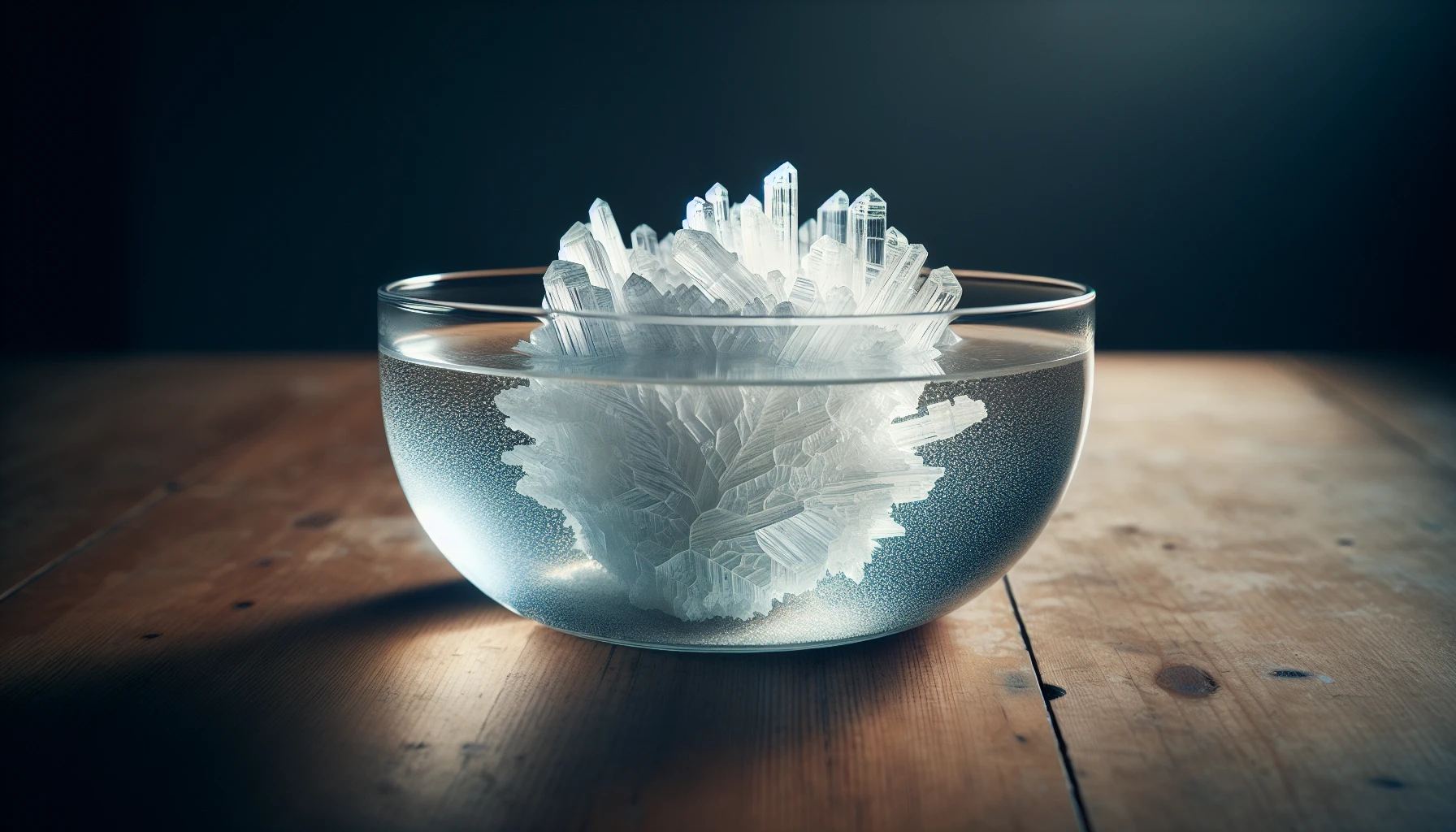
No, selenite is not water safe (unlike many other crystals) due to its low hardness and solubility in water. Ranking a mere 2 on the Mohs Hardness Scale, selenite is one of the softest crystals, making it particularly vulnerable to water. When exposed to water, selenite can dissolve and lose its luster.
Given its sensitivity, handle selenite with care and refrain from submerging it in water, even in a glass jar, as this may reduce the crystal’s size and sheen.
What happens if Selenite gets Wet?
When selenite gets wet, its structure can be affected. It may become softer and more fragile, with its luster potentially diminishing. As selenite is soluble in water, it can even dissolve if exposed for an extended period. While some changes to selenite’s appearance and texture can be reversed, prolonged soaking of the crystal should be avoided, as it can result in irreversible damage.
Is Selenite Water Soluble?
Yes, selenite is water soluble, meaning it is capable of dissolving in water and should be kept away from it. Its solubility is due to its chemical composition of sodium selenite (Na2SeO3). Selenite dissolves at a relatively quick rate, so it is advisable not to submerge or cleanse it in water to prevent its dissolution. Factors such as temperature, pressure, and the amount of solute already dissolved in the water can also affect the rate of dissolution.
Hence, caution should be exercised with selenite to avoid its exposure to water.
Understanding Selenite’s Composition and Water Solubility
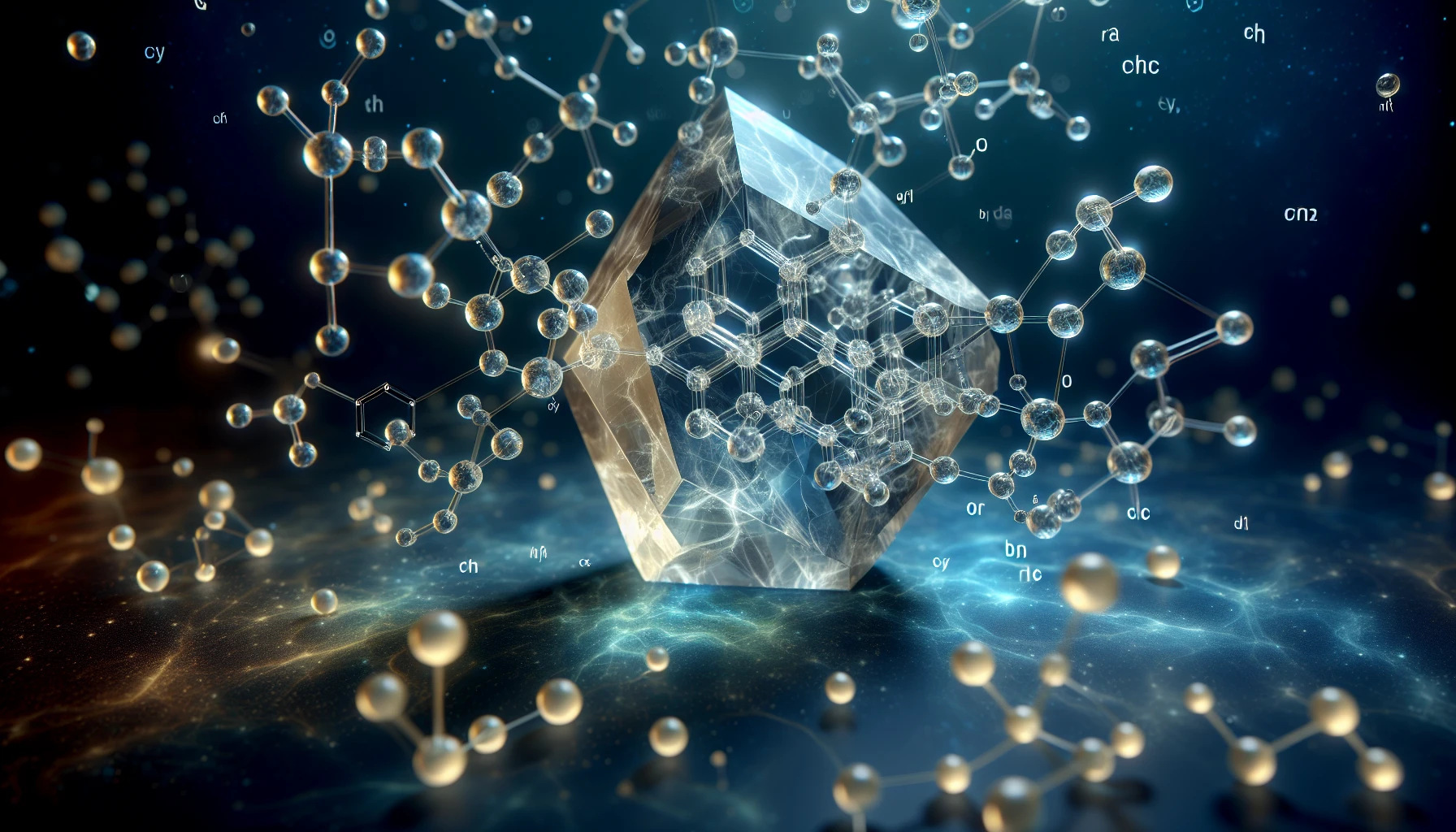
Selenite’s chemical composition, or its chemical formula, is calcium sulfate dihydrate (CaSO4·2H2O), which plays a significant role in its water solubility. This gentle chemical structure allows water to dissolve selenite, reinforcing the need to keep the crystal dry and avoid water when cleaning it to prevent dissolution.
Selenite’s solubility and the fact that selenite dissolve over time when exposed to water for an extended period, make it crucial to handle it carefully and minimize contact with water to retain its luster.
The Role of Water in Selenite’s Structure
Water plays a role in selenite’s structure, as it exhibits slight solubility in water and interacts with its molecular structure through chemical reactions. In weakly acidic solutions, selenite can interact with sodium sulfide, which can affect its solubility.
Water does contribute to selenite’s chemical composition, but remember, its exposure to water can result in dissolution and potential damage. Therefore, selenite should be handled carefully and water should not be used for its cleaning.
Comparing Selenite with Other Water-Soluble Minerals
Comparing selenite with other water-soluble minerals helps us understand its unique characteristics and how it responds to water. Water-soluble minerals share the commonality of being able to dissolve in water, undergoing a process of dissolution where the mineral particles break down and disperse in the liquid. Other crystals that are not suitable for water cleansing include:
- Fluorite
- Calcite
- Kyanite
- Malachite
Contact with water can cause these water-soluble minerals to dissolve and diminish, which underscores the need for careful handling of selenite to preserve its aesthetic appeal and properties.
The Experiment: Testing Selenite’s Reaction to Water
To further explore selenite’s reaction to water, an experiment was conducted to observe its response to water exposure in both the short and long term. Using various tools and methods, such as electrothermal atomic absorption spectrometer and breakthrough curve modeling, researchers were able to study the immediate and long-term effects of selenite’s exposure to water.
Immediate Effects: What You Notice Right Away
In the experiment, when selenite was exposed to water, it remained insoluble and did not dissolve or exhibit any visible alterations. This suggests that selenite may be more resilient to water exposure than initially thought. However, keep in mind that selenite still remains a soft mineral, necessitating careful handling to prevent damage.
Long-Term Exposure: Changes After an Extended Period
Over time, the experiment revealed that exposure to water had detrimental effects on selenite, leading to diminished endurance and maximum swim, decreased gonad-somatic index (GSI) and cumulative production of eggs, and potential damage to the liver and kidneys.
These findings emphasize the need to avoid prolonged water exposure when managing selenite, as its delicate structure can degrade over time due to water.
Practical Advice: Can Selenite Go in Water Safely?
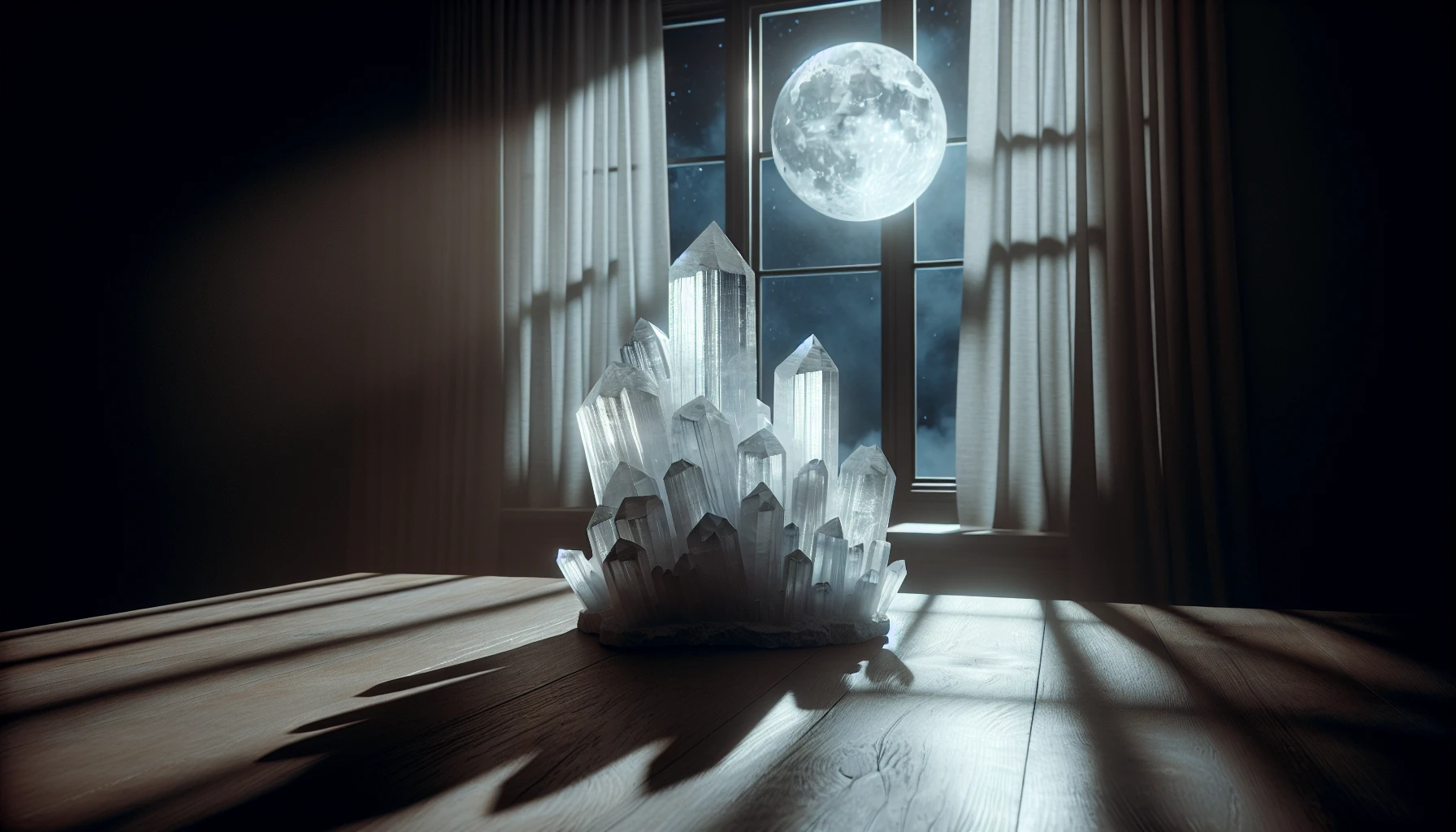
Based on our understanding of selenite’s water solubility and the experiment’s findings, there are some practical tips for handling selenite when it comes to water exposure. While it’s crucial to avoid submerging selenite in water, there are alternative methods for cleansing and maintaining its beauty without causing damage.
Quick Cleansing with a Wet Cloth
For quick cleansing of selenite without causing damage, a wet cloth can be employed. Use a soft cloth, such as a damp rag or a soft toothbrush, to gently wipe the surface of the crystal. Be mindful not to use excessive water or apply too much pressure while scrubbing, as this could cause damage to the delicate crystal.
Employing a damp cloth allows you to effectively clean your selenite crystals without subjecting them to the risks linked to water submersion.
Risks of Submerging Selenite in Water
Submerging selenite in water carries several risks, including:
- The potential for water to seep into the cracks of the stone and widen them, leading to structural damage and increased brittleness
- The appearance of the crystals can be dulled
- The optical properties of the stone can be compromised, potentially reducing its value
To safeguard the aesthetic allure and integrity of your selenite crystals, you should avoid submerging them in water and handle them gently.
Alternative Methods to Cleanse Selenite
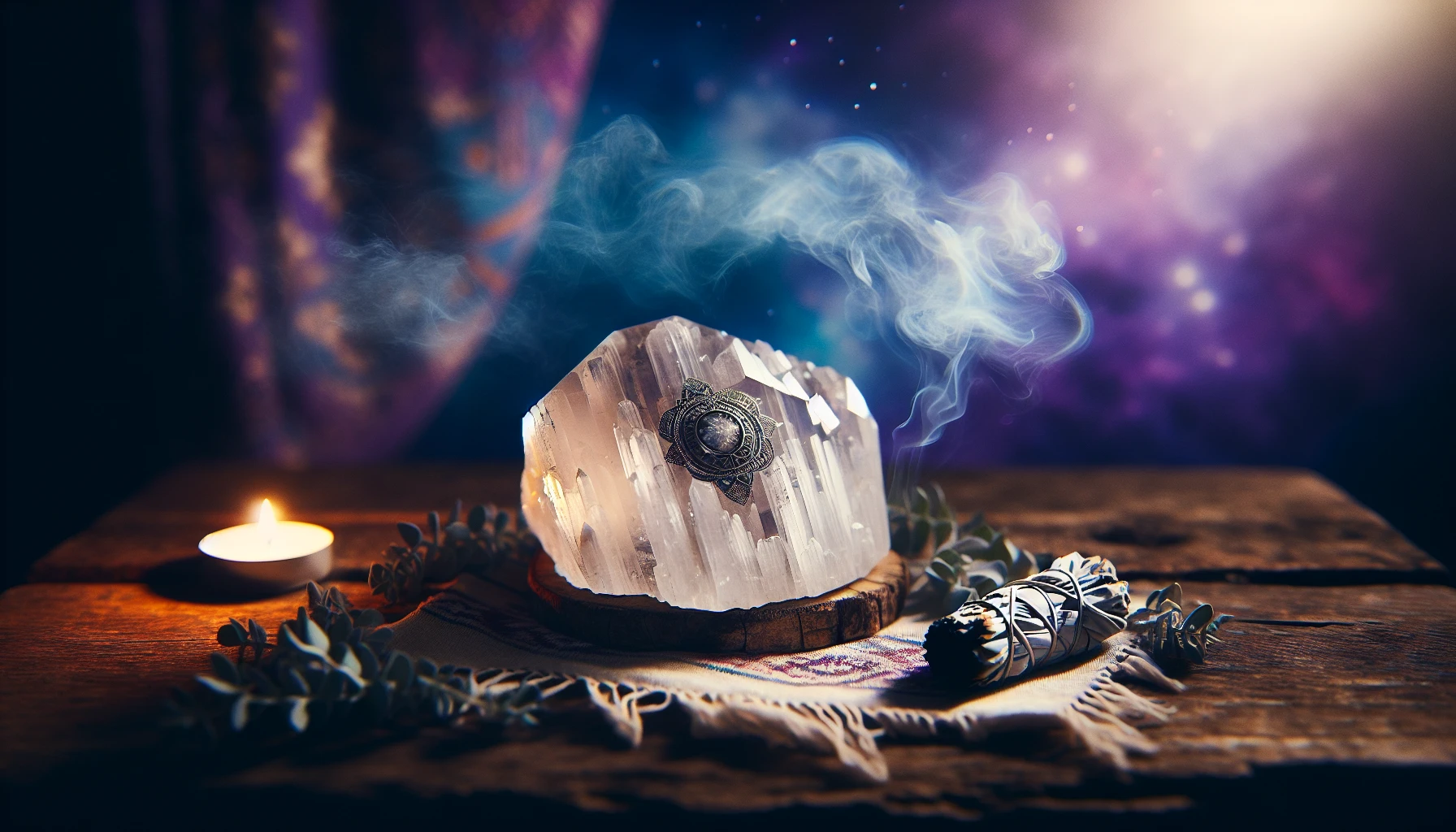
As we’ve established that water is not a suitable method for cleansing selenite, it’s important to explore alternative methods that can effectively cleanse and maintain the crystal’s beauty without causing damage.
Two popular methods for cleansing selenite without using water are moonlight charging and smudging with dried herbs.
Moonlight Charging: Harnessing the Full Moon’s Energy
Harnessing the full moon’s energy is a powerful way to charge and cleanse selenite crystals. To charge selenite with moonlight, follow these steps:
- Find a sacred space, preferably in direct moonlight such as a windowsill.
- Place the selenite crystals in the moonlight.
- Leave them there for a few hours to absorb the gentle, calming energy of the moon.
This method enables you to cleanse your selenite without subjecting it to potential water damage.
Smudging with Dried Herbs
Another effective method to cleanse selenite without using water is smudging with dried herbs. To smudge selenite, you can use a smudge stick of your preference, such as sage, palo santo, or rosemary. Light the tip of the smudge stick and move the selenite through the smoke to purify it.
This method not only cleanses the crystal but also fills the surrounding environment with the positive energy of the dried herbs.
Selenite and Its Interactions with Different Types of Water
Selenite exhibits distinct reactions to various types of water, including salt water and moon water. Understanding these interactions is essential for proper care and handling of selenite crystals, ensuring their beauty and energy remain intact.
Selenite and Salt Water: A Cautionary Note
While selenite is insoluble in water, including salt water, it’s important to exercise caution when using salt water to cleanse or handle selenite. Salt water can weaken the material, cause cracking, or even cleave the crystal.
To retain the allure of your selenite crystals, it’s recommended to steer clear of salt water and choose alternative cleansing techniques like moonlight charging or smudging with dried herbs.
The Myth of Selenite Infused Moon Water
The belief that selenite can be infused with water to capture the energy of the moon is a myth due to the fact that selenite dissolves in water, thus rendering it unsuitable to be infused with water. Though the notion of selenite-infused moon water might sound enticing, remember that selenite is water-soluble and should not be combined with water for any reason, as it could result in the dissolution and possible harm to the crystal.
Preserving the Beauty of Selenite Crystals
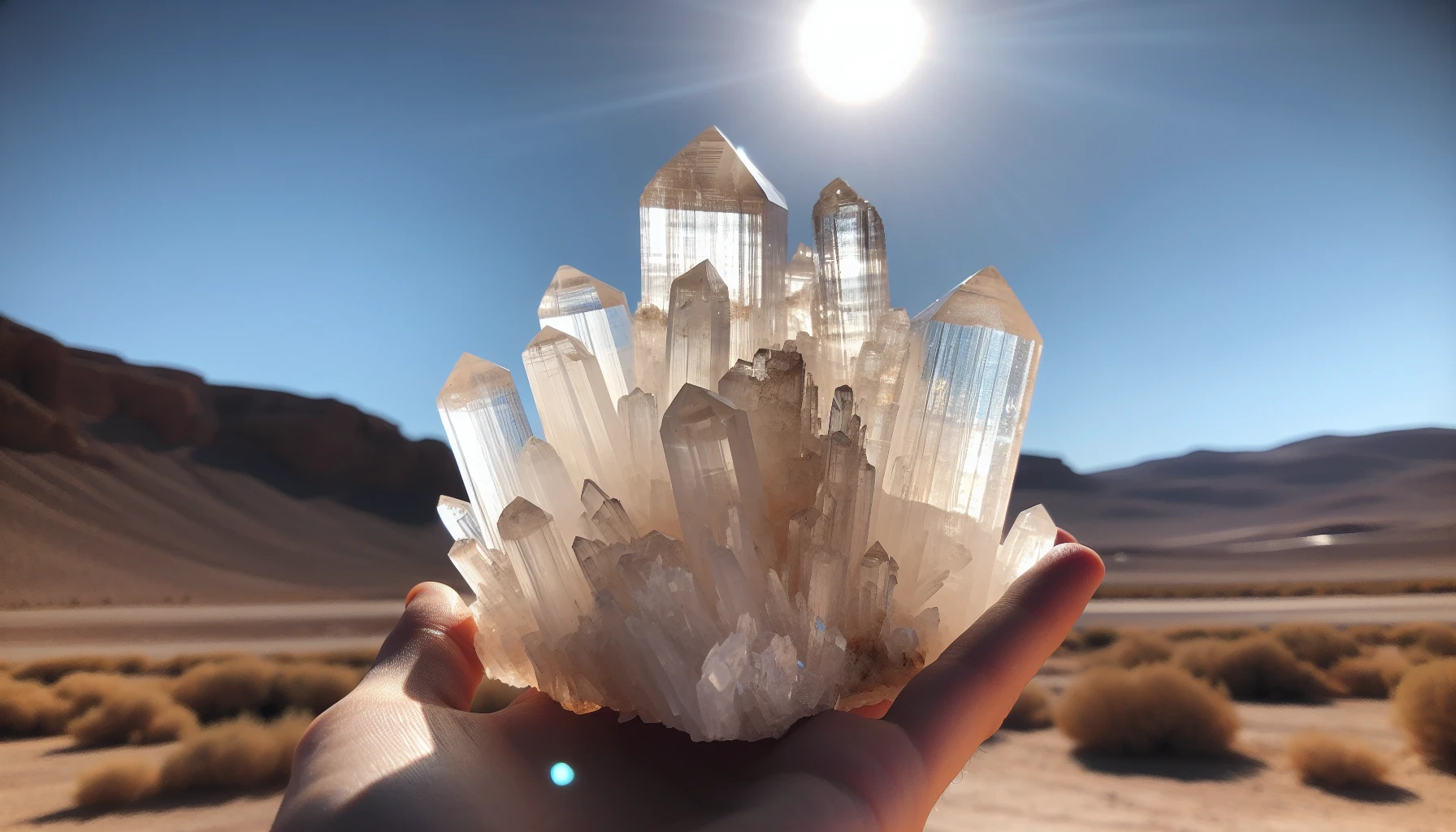
Caring for selenite crystals requires a gentle touch and an understanding of their unique properties. By following the tips and advice provided in this blog post, you can ensure that your selenite crystals remain beautiful and energetic, enriching your life and space with their calming presence.
Keeping Selenite Dry and Safe
To ensure your selenite remains dry and safe from potential water damage, it should be stored in a moisture-free location and kept away from humid environments. When cleaning selenite, use a damp cloth rather than a dripping one, and gently wipe the surface of the crystal.
Remember to handle selenite with care and avoid using excessive water to prevent potential damage to the crystal.
Sunlight Exposure: Can Selenite go in the Sun?
No, Selenite can NOT go in the Sun. While sunlight can charge the energy of a selenite crystal, it’s important to avoid exposing it to direct sunlight for extended periods, as this can cause harm to the crystal, make it appear lackluster, and potentially attract negative energy.
Long-term sun exposure can make selenite lose its sheen and appear dull, hence it’s recommended to keep it out of direct sunlight whenever feasible.
How to Polish Selenite?
Polishing selenite is a delicate process that requires a gentle touch. Here’s how to do it:
- Begin by sanding the crystal with 600 or 1000 grit sandpaper.
- Use a slightly damp cloth with toothpaste to carefully polish the crystal.
- Be gentle and light to avoid causing any damage to the delicate crystal.
By following these steps, you can maintain the luster and beauty of your selenite crystal, keeping it an attractive and energetic addition to your space.
Know the Basics of Selenite Crystal
Having a basic understanding of selenite crystal, including its toxicity, safety, and how to identify genuine selenite, is crucial for anyone drawn to the captivating energy of this unique crystal. By familiarizing yourself with the properties and care requirements of selenite, you can ensure you’re well-equipped to enjoy the benefits and beauty of this remarkable crystal.
Is Selenite Toxic?
Selenite is not toxic when in a moist state. However, it’s important to exercise caution when handling selenite and to avoid ingestion or excessive exposure. While selenite is not toxic in its natural state, high doses of selenite may have adverse effects on muscle contractility and may lead to heart toxicity and breathing difficulties.
Consequently, selenite should be handled cautiously to prevent ingestion or inhalation.
Is Selenite Safe to Touch?
Yes, Selenite is safe to touch. Selenite has no adverse effects on skin; hence, it is safe to touch and handle without gloves. No personal protective equipment is required for handling this crystal. As it is a soft mineral, it can be easily scratched and is warm to the touch due to its thermal insulating properties. While it is safe to handle, it’s important to be gentle with selenite to avoid causing any damage to the delicate crystal.
Can you Wash Selenite?
Yes, you can wash Selenite but caution is required due to its fragility and water solubility. To clean selenite, it’s recommended to run it under water and scrub it gently with a soft toothbrush. However, it should not be left submerged in water for an extended period, as this could cause the stone to disintegrate.
Additionally, it is suggested to dry the crystal promptly after cleaning.
How to Tell if Selenite is Real?
To tell if a selenite crystal is genuine, look for the following characteristics:
- Transparency
- Luster
- Delicate crystal form
- Excellent cleavage along distinct planes
Genuine selenite is clear and colorless, whereas Satin Spar Selenite can be translucent and present in white or orange. Selenite’s low hardness means it can be easily scratched with a fingernail, leaving a white powdery residue.
Summary
In conclusion, selenite crystals are known for their captivating beauty and powerful energy cleansing properties. While their delicate nature requires special care when it comes to water exposure, it’s possible to maintain their beauty and energy by following the tips and advice provided in this blog post. By understanding the unique properties of selenite and practicing proper care, you can enjoy the benefits and beauty of this remarkable crystal for years to come.
Frequently Asked Questions about Selenite Crystal
Can I take a bath with Selenite?
No, you can not take a bath with Selenite. Selenite should not be placed in water or become too wet as it can dissolve. To enjoy the energies of love during your bath, add two rose quartz stones to your bathwater for optimal benefit.
Can selenite go in the Sun?
No, Selenite can not go in the Sun. Selenite can be left in the sun for a short time, but to maintain its properties and glossy sheen, it should be charged quickly by using meditation, mantras, incense, smudge sticks, or crystal grids.
Can selenite go in salt?
No, Selenite should not be put in salt as it has a low Mohs score of 2 and dissolves in both saltwater and normal water. To maintain its self-cleansing properties, cleanse it with a damp cloth.
Which crystals cannot be cleansed in salt water?
Selenite, Calcite, and Fluorite should not be cleansed in salt water, as they are particularly vulnerable to the solution.
Is selenite toxic?
Selenite is not toxic when in a moist state, but caution should be exercised to avoid ingestion or excessive exposure.